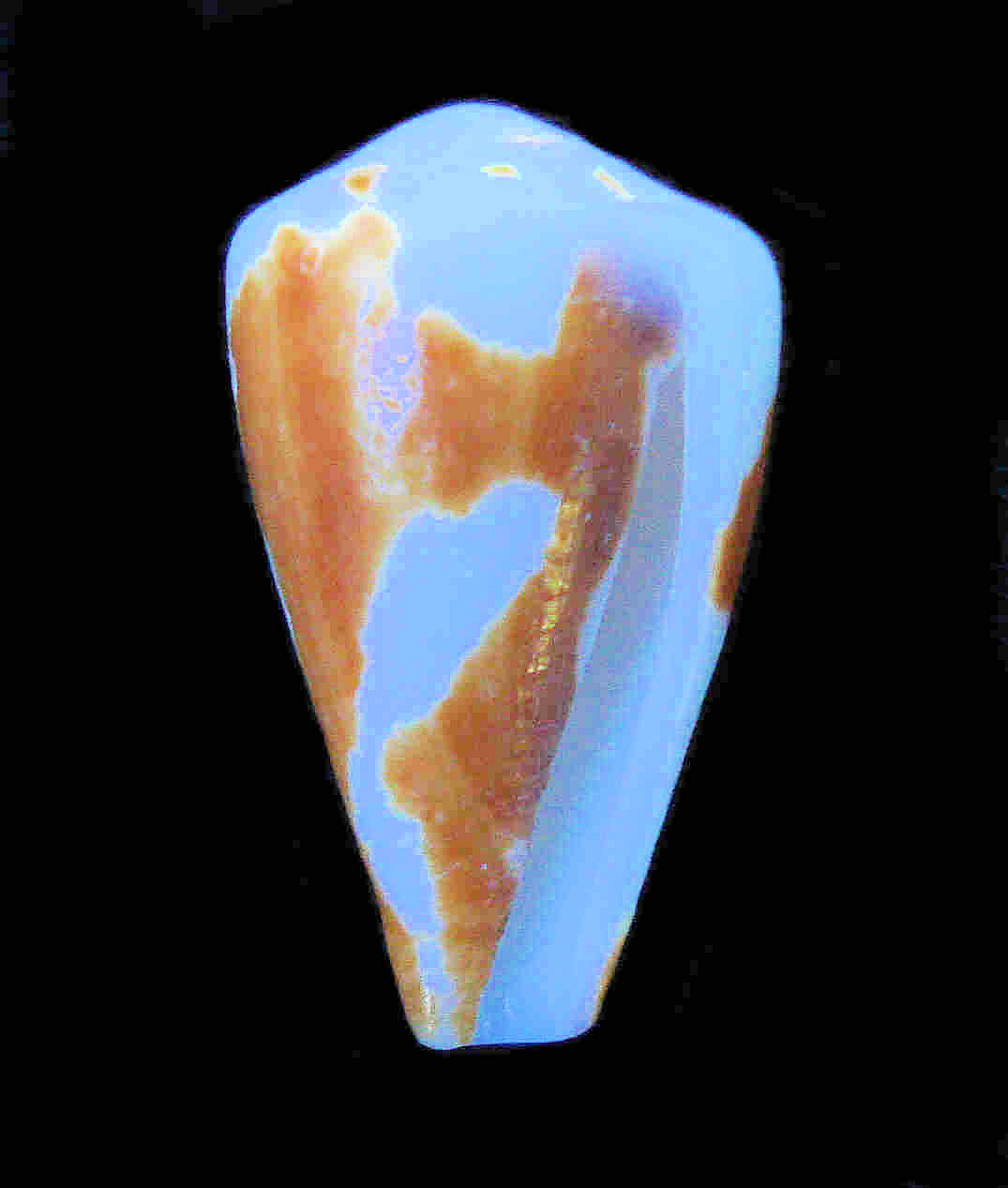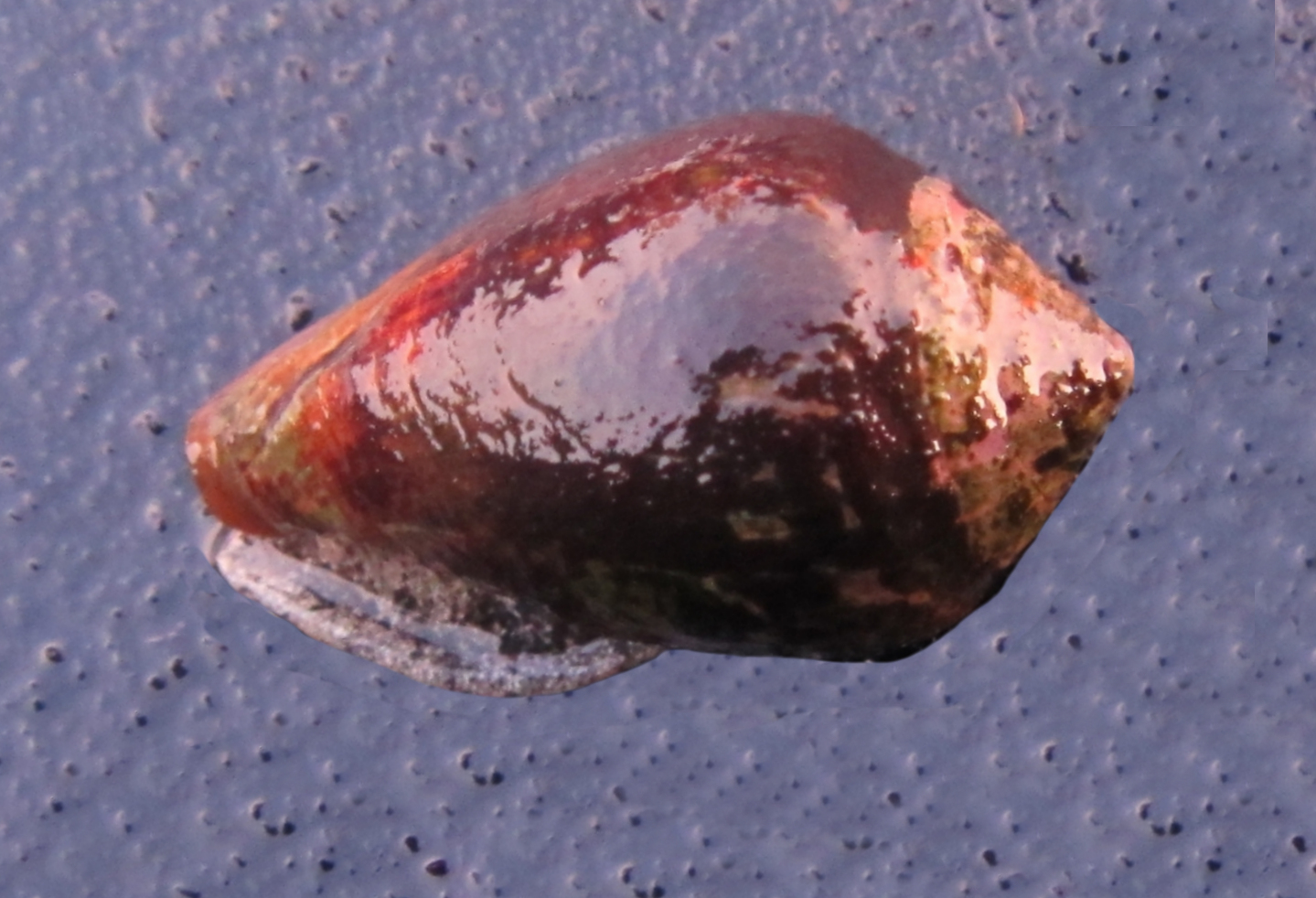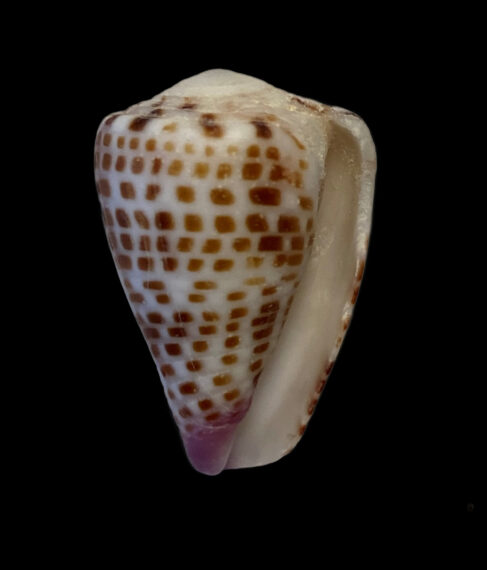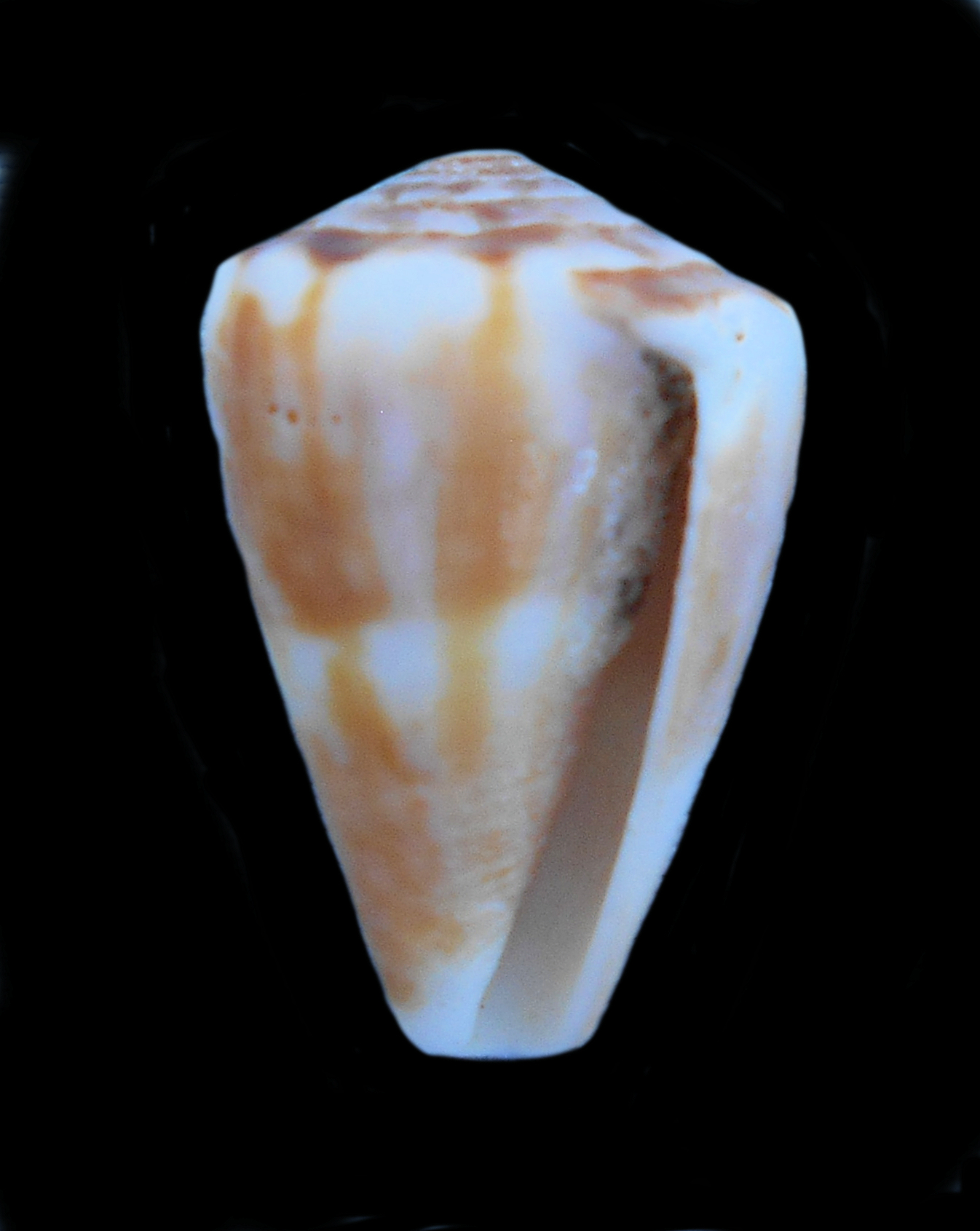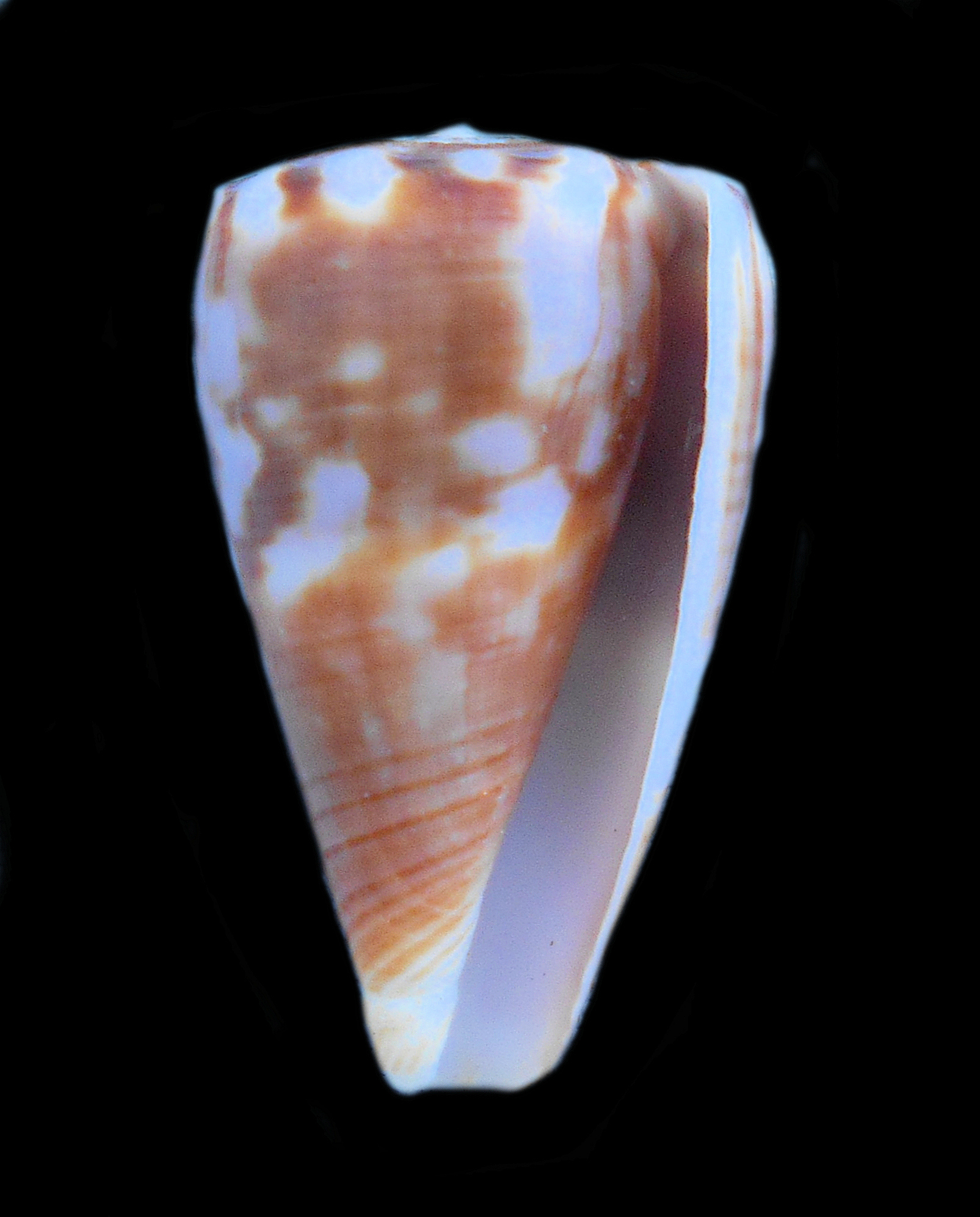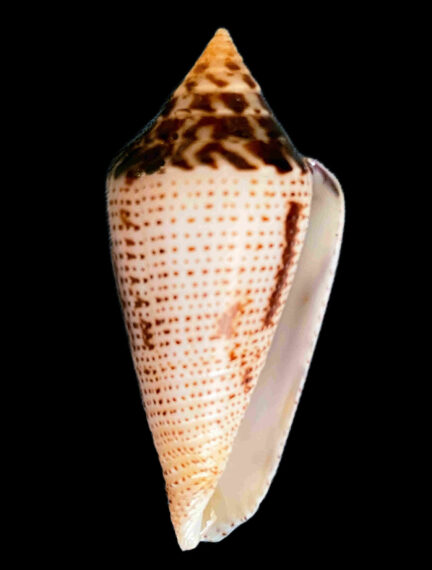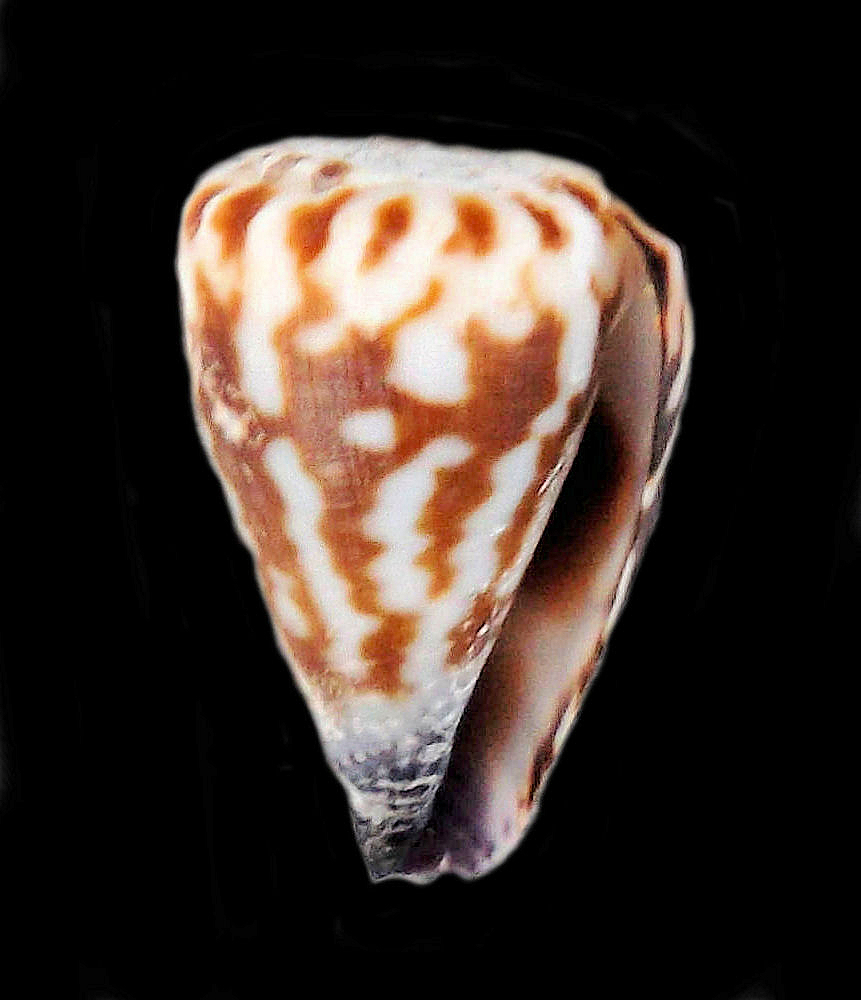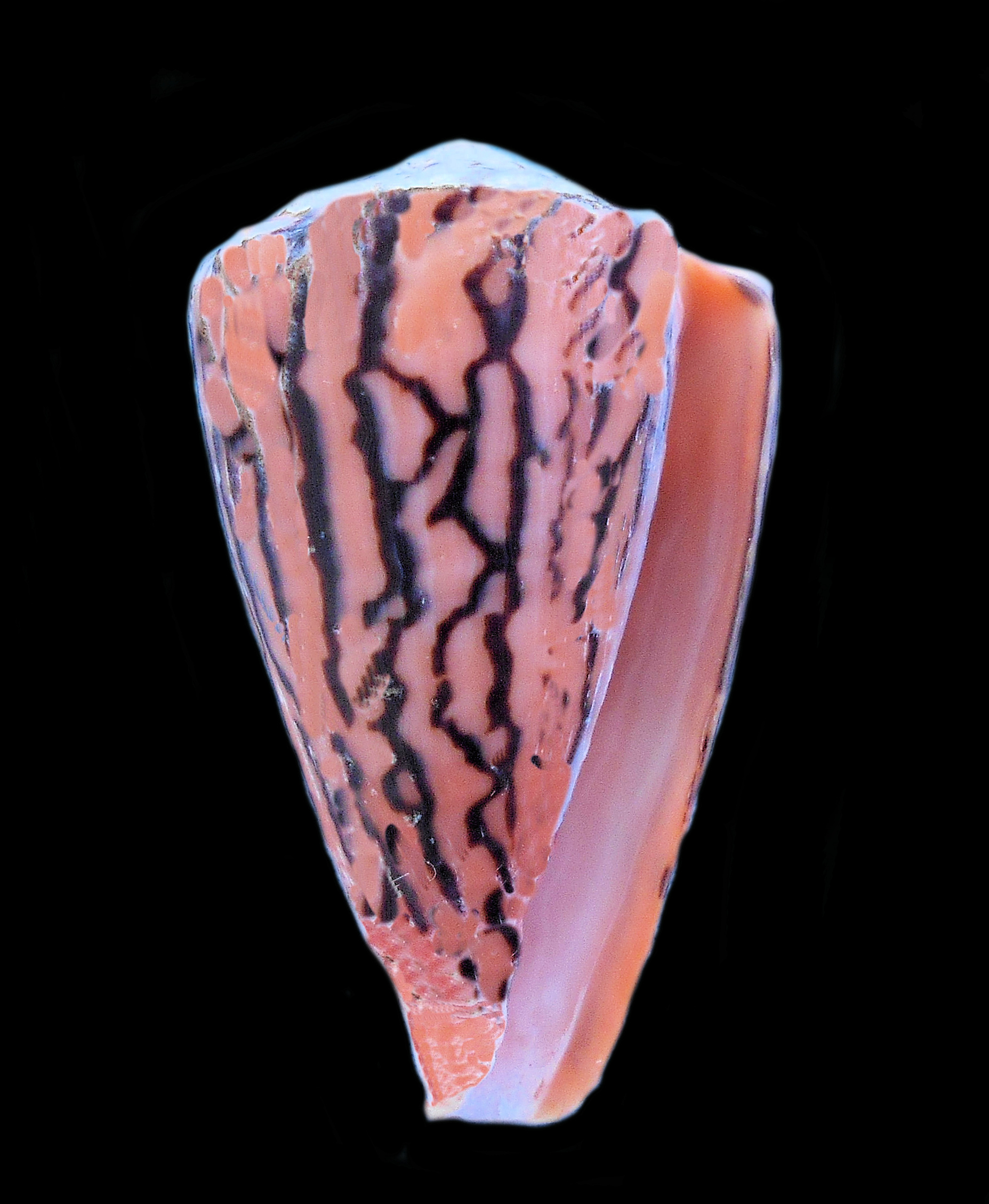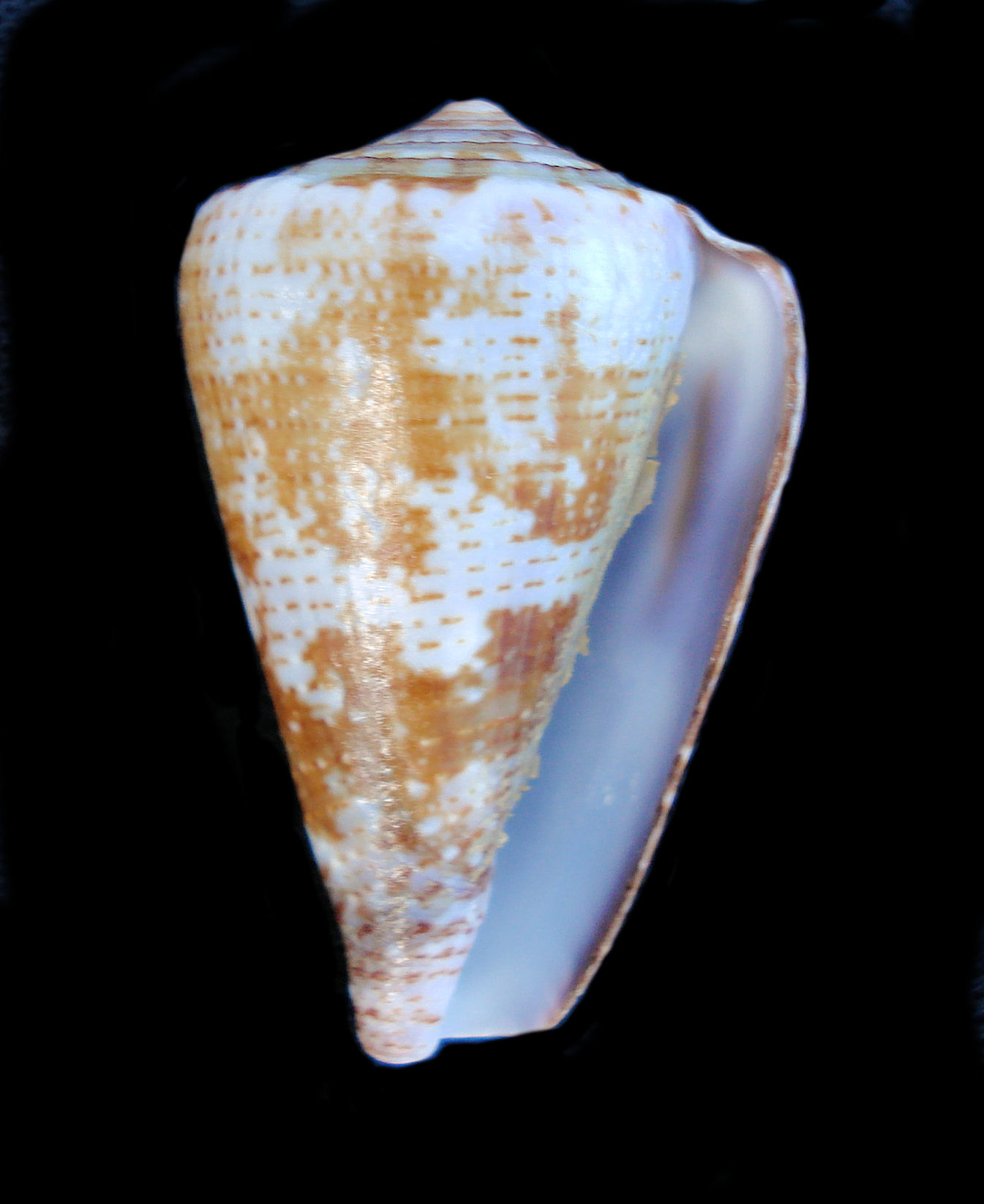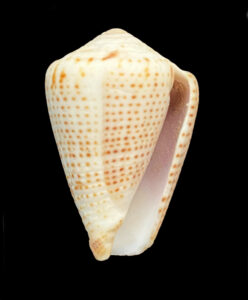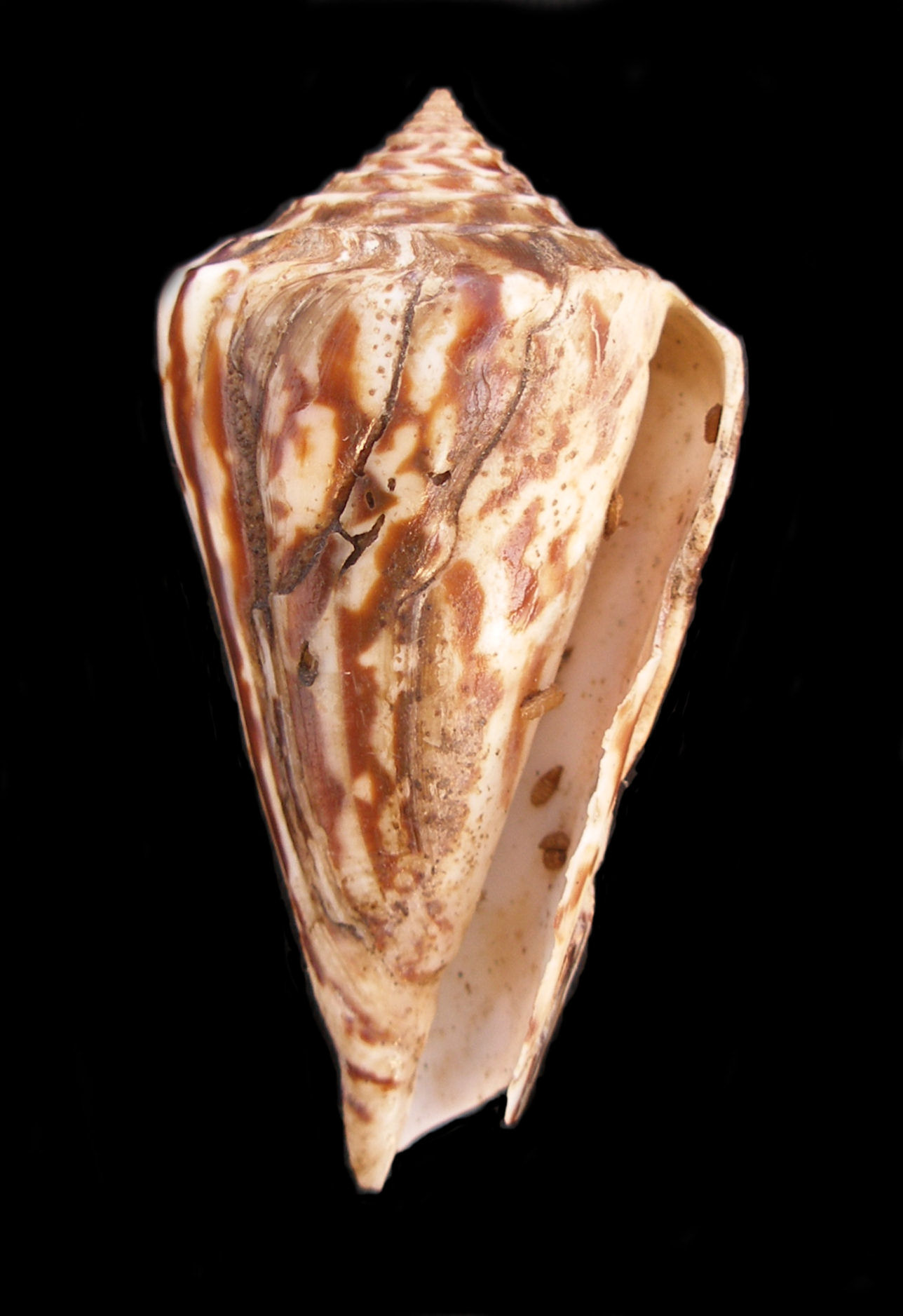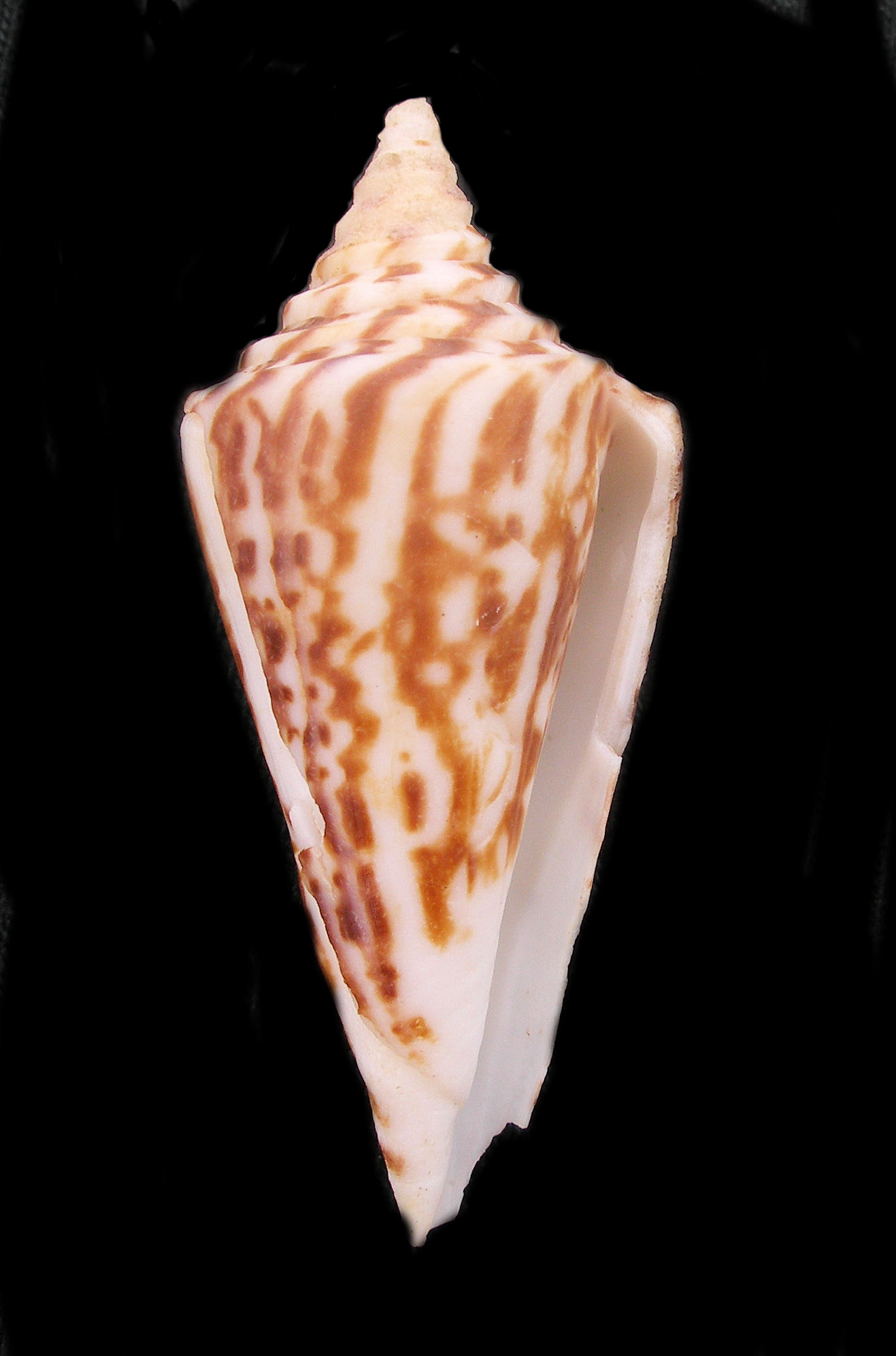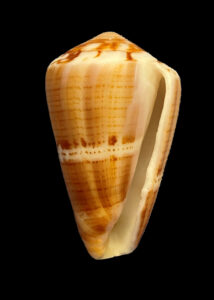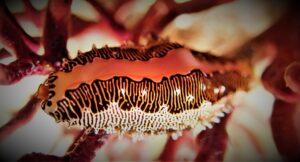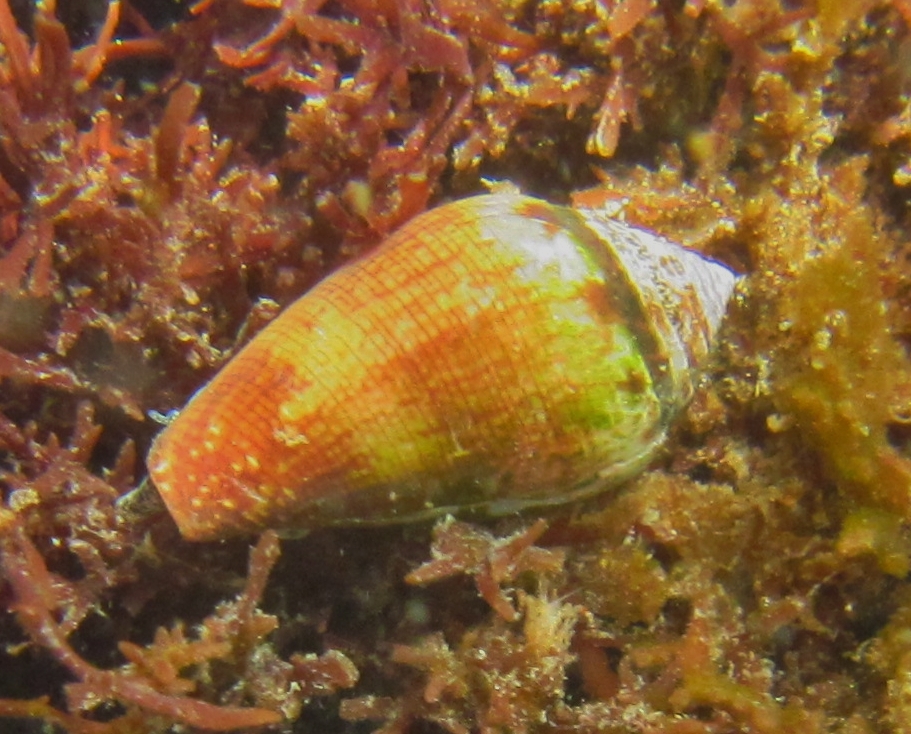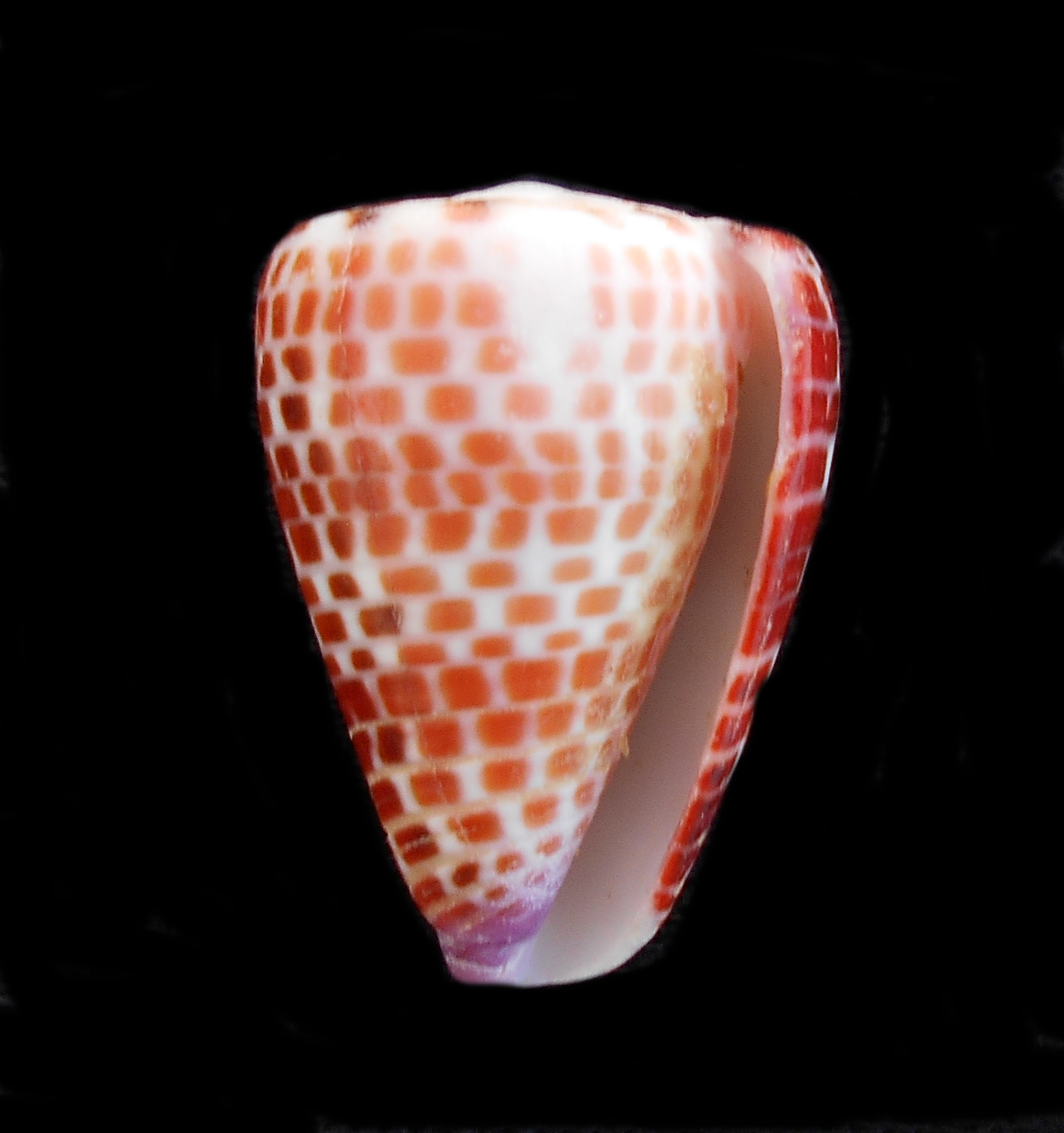Cones are gastropod mollusks of the Conidae Family. Cone snails are found in sand, under rocks and rubble, or crawling on hard substrate. They are primarily nocturnal. Cones are found worldwide, in tropical and subtropical waters are found intertidally to very deep environments. There are at least six hundred species in the Conidae Family of which nineteen are found along the coastlines of the Baja Peninsula. Cones Snails are eaten by fish, crabs, and other predatory mollusks.
While many people are aware that Cones can sting humans, there is a lot of misinformation regarding just how big a threat they pose. The first recorded incident of a person stung by a Cone was in 1706. Since that time, only eighteen species of Cones, out of more than five hundred species in the Family, have been implicated in human envenomation. Most incidents of Cone envenomation occur when handling live Cones. A lesser number occur when waders step on or near a Cone and are stung in the foot. Cone venom contains a very powerful neurotoxin, know as a conotoxin, which blocks nerve action. Most fatalities happen when the blocked nerve action results in respiratory failure. Unlike some venomous animals, larger Cone Snails deliver more venom per sting than smaller individuals.
One study, focused on a forty year period in the last half of the 1900’s. That study found a total of one hundred thirty-nine reliably reported Cone stings, worldwide. Of that number, thirty-six were fatal, fifty-seven resulted in serious medical conditions, and forty-four were considered to be minor. Almost all fatalities involved one Cone species, the Geography Cone, Conus geographus. Geography Cones have a wide distribution in the Indio-Pacific and are not been documented as residents of Mexican waters. No Cones found along the Baja Peninsula have been linked to human stings. That could mean that there are not capable of such stings, that the opportunity hasn’t yet arisen, or more likely, such encounters have not been reported. Common sense dictates that all Cones should be treated with respect. If you must handle a Cone shell, hold it by the wide end. This does not guaranty safety, because the proboscis which launches the sting is, in some species, as long as the shell itself. Gloves also do not guaranty safety because Cone Snail stings have been known to penetrate 5 mm wetsuit material.
Chemicals found within Cone Snail venom, the conotoxins, are currently in use in medicine to treat human neurological illnesses and as very powerful pain killers. With ongoing research numerous new applications may be found. We believe that your chances of being harmed by a Cone mollusk are less than your chances of being helped by one.
